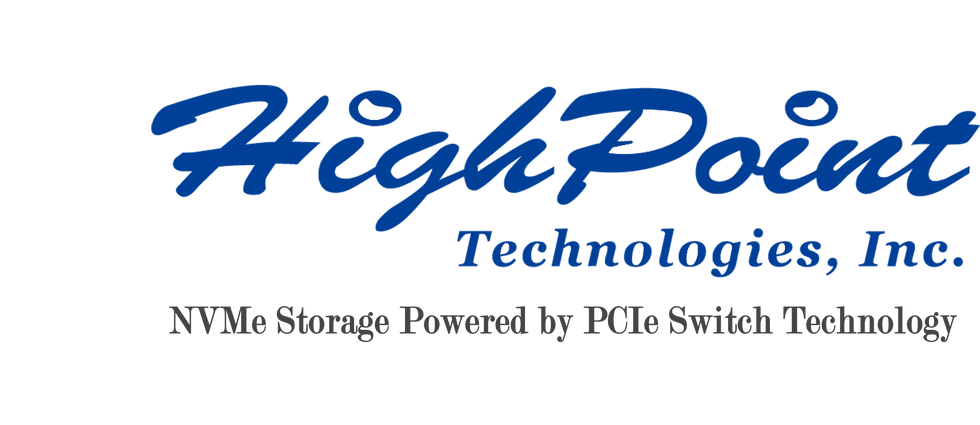The Best, Bootable NVMe RAID Storage for Linux
- highpoint001
- Dec 28, 2021
- 4 min read
Updated: Jul 6, 2022
If you ever find yourself looking for a simple, reliable NVMe RAID solution for a Linux platform, we highly recommend checking out our FnL BRD RAID drives.

At the time of this writing, we offer two BRD (Bootable RAID Drive) product ranges – the dual-M.2 SSD6202P, and the quad-M.2 SSD6204P. Each range is based on our SSD6202 and SSD6204 RAID controllers respectively, but includes pre-configured RAID 0 or 1 storage (your choice) comprised of either Samsung 970 EVO Plus or 980PRO SSD’s (also your choice).
BRD series drives can be used for either boot or storage applications (or even a combination of the two) – the BRD6204P can support multiple arrays.


OK, that sounds good, but…so what?
HighPoint seems to offer bazillions of NVMe RAID controllers, many of which support Linux and are capable of booting. Aside from the convenience of not having to buy SSD’s separately, why go with a BRD drive? Well, we will attempt to shed some light on this – patience, dear reader.
Only x8? Isn’t that slow?
The first thing you may notice is the PCIe lane requirement. PCI Gen3 x8. No, x8 doesn’t exactly scream performance, but that’s not the real draw here.
The PCIe 3.0 x8 host interface means they can be connected to any PCIe 3.0/4.0 x8 or x16 slot. Don’t be so quick to dismiss the benefits of Universal Compatibility; it’s nice to be able to plug a thing into your system and not have to worry about whether it will work or not (or even be recognized, for that matter).

BRD6202P Recognized by VMware7.0
Secondly, it wouldn’t be accurate to label either model line as a slouch. 7000+MB/s is plenty fast, especially if you consider these drives are tuned to maximize random access performance, and not sequential transfers. They easily beat out any 2 or 4-drive SAS/SATA HDD or SSD solution by a substantial margin (300% faster, minimum).
But again, that’s not the real draw here. BRD’s prime advantage is the simplicity of the solution, which is largely derived from our BRD IOP RAID architecture.
Integrated RAID Support (IOP RAID Architecture)
BRD 6200 AIC drives benefit from built in IOP RAID technology. Though this architecture does not result in major performance gains over your standard “software” NVMe RAID product, it trivializes installation and setup procedures.
This architecture also means BRD AIC RAID drives are natively supported by all major PC-compatible operating systems. Basically, anything running Windows 10/11/2019, FreeBSD, or Linux setups running Kernels starting from v3.10 or later have built-in support for any BRD drive.
Think; no drivers, no complicated software app and no compatibility issues. Sounds simple as can be, right?
It is. BRD NVMe RAID drives are essentially plug-and-play devices. They are shipped ready to go, can be installed in seconds by anyone capable of using a screwdriver, and will be instantly recognized by any OS as ordinary “drives”.
Need to update your kernel? No problem…
This leads to the next major benefit of BRD drives – hassle free OS updates.
Modern operating systems seem to launch major updates on a weekly basis, many of which include critical patches or fixes designed to circumvent unauthorized intrusion, and head off the threat of evolving malware.
Unsurprisingly, most customers are inclined to follow the OS’s lead, or enable auto-updates in an effort to avoid potential security problems.
However, this can be a painful process for any non-natively supported device installed into a Linux environment. Once the kernel updates, a non-native device is no longer supported. The resolution – manually compiling a new driver from a source package, can be a headache, and requires a pro-caliber Linux Admin skillset. And, if you happen to be booting from that device, your sore noggin may quickly be replaced with a nightmarish migraine.
Fast, but not always user friendly. To be frank, the vast majority of HighPoint products were designed for users with professional IT backgrounds. This has been the case for many years now.
While it is true that our Auto-compile feature can minimize downtime for the majority of our NVMe RAID products, it’s not a perfect solution for all customers.
And it’s hard to ignore the fact that many modern SMB’s (small to medium businesses) no longer have dedicated IT departments to manage all of this (especially in the wake of Covid-19), so it’s unrealistic to expect all customers to be comfortable with patching the NVMe driver anytime an OS update rolls around.
FnL: Speedy & Easy: Our FnL product lines were developed to address the complexity of professional NVMe storage, and make things as simple as possible. BRD drives eliminate all of the hassle associated with configuring NVMe RAID for Linux platforms. Native hardware support means you can update as needed, at any time without having to worry about losing data or the ability to boot after fumbling a driver patch.
A complete package
You are probably sick of hearing “out of the box ready” thrown around by any number of solution providers. However, in the case of our BRD RAID drives, it is more than a simple marketing jargon. Unlike our SSD series RAID controllers, FnL BRD RAID drives are complete storage solutions; everything really is shipped pre-configured and ready for use as soon as you open the package.
Aside from installing the actual Linux distribution, you don’t have to touch another piece of software.
.png)
Comments